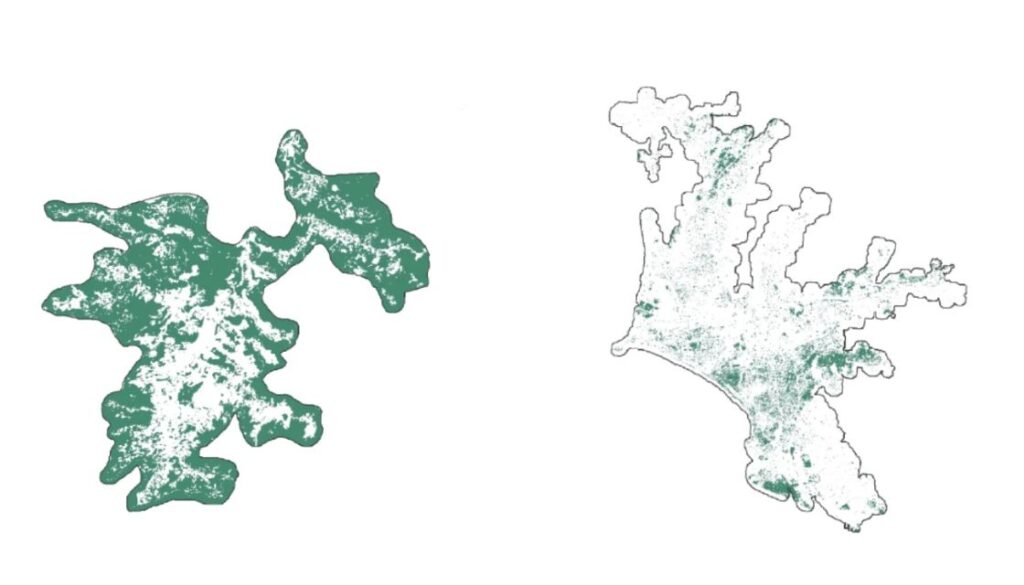New research analyzes green spaces in Latin American cities

We know that green spaces, whether natural or human-designed, are key to making cities more livable. Parks, yards, gardens, forests, and woodlands can mitigate extreme heat, reduce air pollution, and promote the well-being of residents. Yet the extent and distribution of urban green space in Latin America, the second-highest urbanized region after North America — and the most unequal — has been understudied. A new article in the journal Nature Cities involving several CED faculty and researchers, “Potential drivers of urban green space availability in Latin American cities,” aims to rectify this through an analysis of 371 large cities in 11 Latin American countries.
The paper is coauthored by City & Regional Planning postdoctoral researcher Maryia Bakhtsiyarava, working with Professor Daniel Rodríguez, and Mika Moran, a former researcher at the Institute of Urban & Regional Development and now a senior lecturer in public health at the University of Haifa. Iryna Dronova, associate professor of Landscape Architecture & Environmental Planning, contributed to the study. The research is part of SALURBAL (Urban Health in Latin America), a multidisciplinary, multicountry collaborative project aimed at studying the determinants of urban health disparities in Latin America.
The authors aimed to investigate the quantity, spatial distribution, and potential factors influencing urban green spaces in Latin America. They observed high variability across cities: much of this they attribute to climatic conditions (cities in arid regions have a lower percentage of green spaces than those in tropical or temperate climates), although other factors, such the quantity of urban parks, are likely determined by urban planning policies. This is the first paper to systematically examine the availability of green spaces across several hundred Latin American cities.
The authors conclude that cities across Latin America, with wide disparities in urban green space, have differing capacities to implement nature-based solutions for heat mitigation and health promotion.